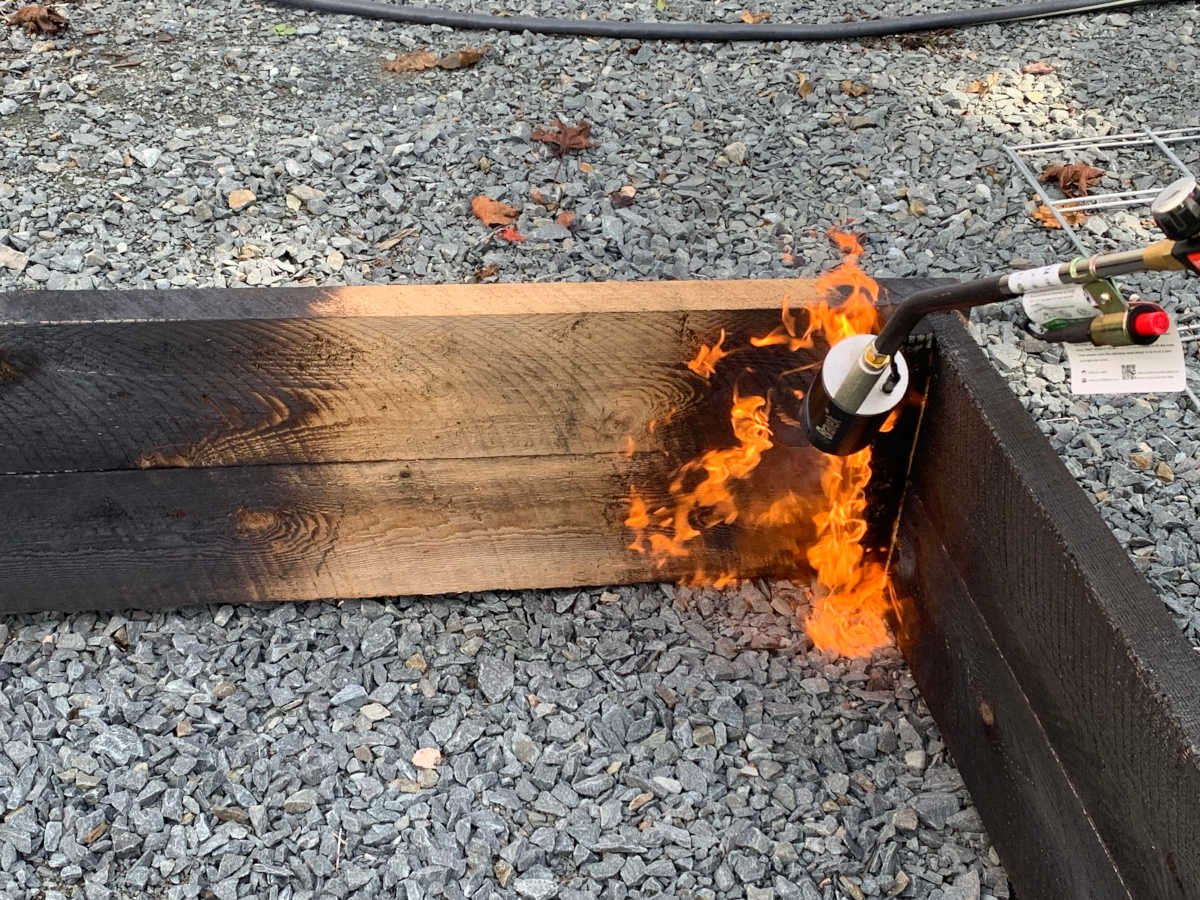Our Garden in 2024
Slowly does it
Turning our garden into a little food forest, one plant at a time, that is the plan! We have a lot of work ahead of us!
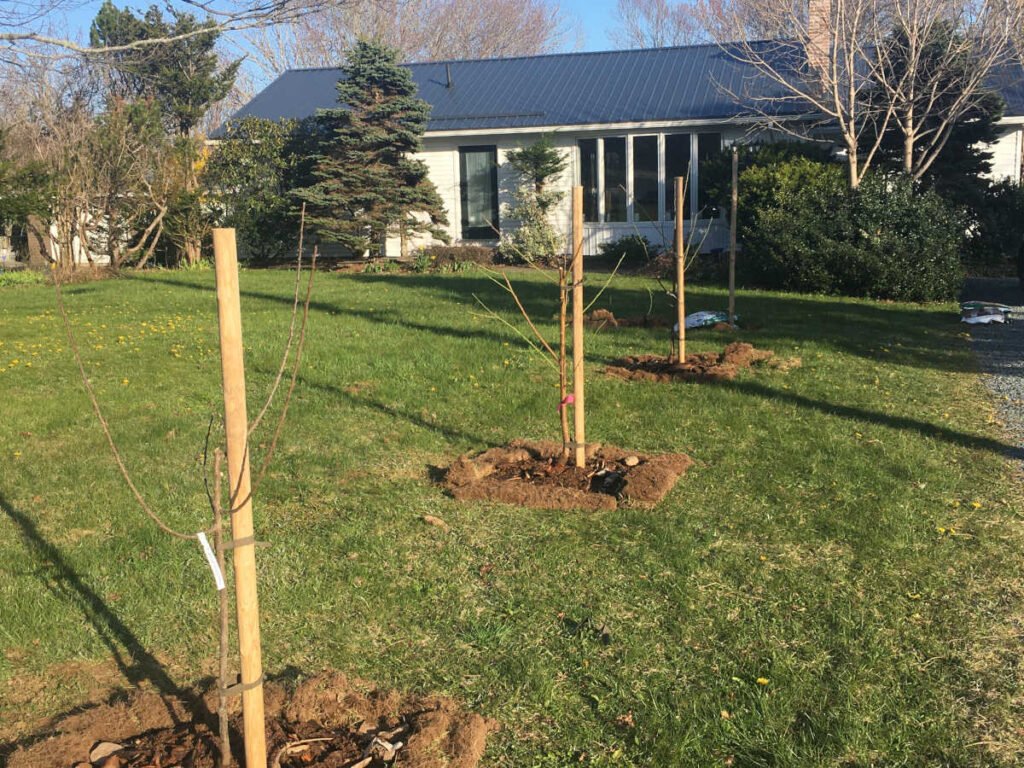
2024, the year we started breaking ground
We started the season off with a bang and planted 4 fruit trees in the front yard. We now have a plum, a nectarine, a peach and an almond tree. All but the almond tree was bought as bare root trees in the spring.
Most already bloomed! But we removed the flowers, because we wanted the trees to use their energy on establishing a strong root system. Fruit will have to wait for a year or two.
Peach, nectarine and almond are all self fertile. But because they are all from the same family, they will easily cross-pollinate. This means that they should produce a better yield than each one on its own.
The plum is the odd one out here. Although it is also part of the Prunus family, it will not cross-pollinate with the other three. But it is self pollinating, so it should do fine on its own.
And in the back, we added 6 little hazelnut trees. Hopefully the squirrels will leave us some nuts, once these little trees get a bit bigger.
We opted for two different varieties. We have 2 trees of the Northern Grimo variety, which produces bigger nuts. And we also have 4 American hazelnuts, with smaller nuts.
We opted for 2 varieties to start with. Firstly, for some diversity in nuts and harvesting time. But also as a backup measure in case the Eastern Filbert blight finds them. Hopefully I have some resistance in the mix.
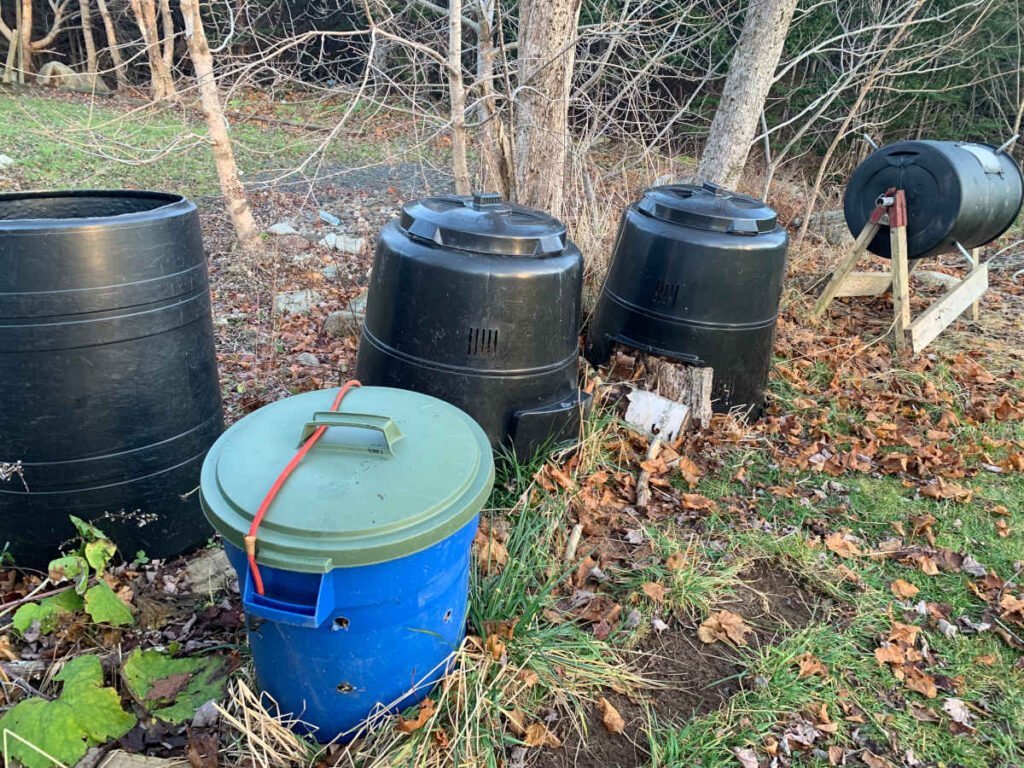
Little family of Compost bins
My little family is multiplying and growing.
This summer I was given the other two bins. The black one is missing it’s cover at the base, so for now I have closed it with some bark and wood logs. This is my storage bin for shredded leaves to use in my compost pile.
The other bin, the tumbler, was also a gift. The previous owners weren’t too happy with the results it produced. It took a very long time for it to compost anything. At first it was white , so I spray-painted it black to help heat up the compost. We’ll see how it goes!
For more on my compost bins, check out this article here. I explain how I made the blue compost bin, and how I turned the big black one into a no-turn no fuss compost bin.
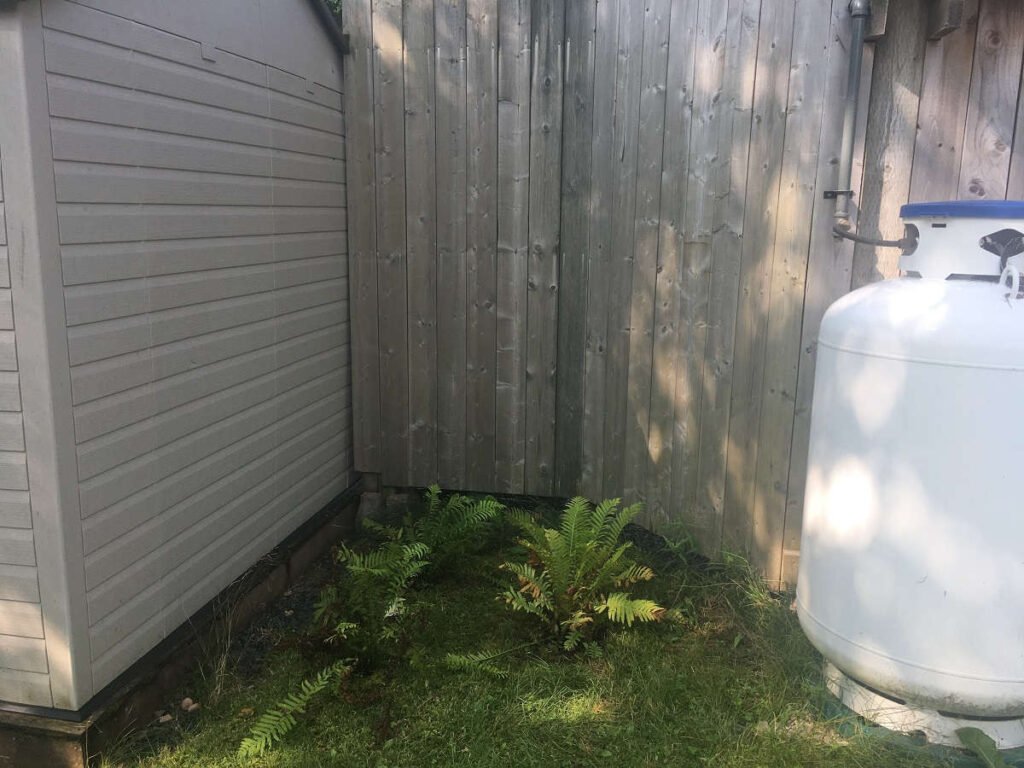
Ostrich Ferns
A very exciting addition, somewhat unplanned, are 6 plants of fiddlehead ferns (Matteuccia struthiopteris)! We weren’t quite ready for them, but we could not resist!
We got these at a very good price, at Costco of all places. But they have settled in well and in a few years, we should be able to harvest our first fiddlehead harvest.
Fiddleheads are native here, and for a short time in spring one can harvest the newly forming fern fronds. They are a delicacy, and we love them. We have been unsuccessful in finding a spot to harvest them in the wild. So, the next best option was to plant our own in the interim!
Three of them went into the garden in an area that is quite shaded and wet. Now we don’t have to mow this odd little corner. The other three went into the boundary between us and the little forest.
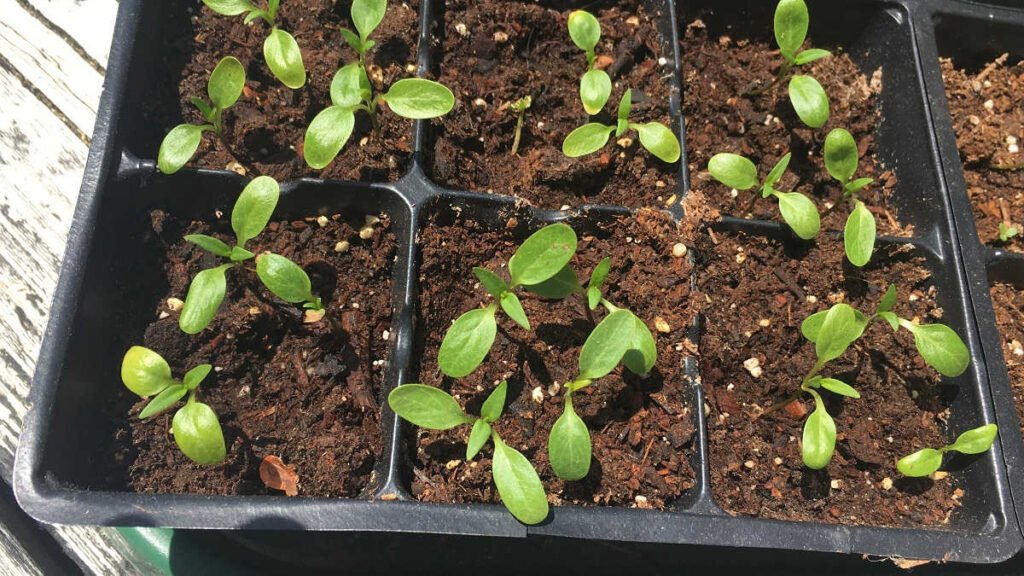
Native Seedling
I was given some seed packets of native species in 2023. This was a good opportunity to think about where to plant what and learn how to cold stratify seeds.
In March I placed the seeds into moist soil, each in their own packet, into the fridge and let them cold stratify for about 10 weeks.
When it was time to plant, I took them out of the fridge and left them on the counter. This allowed some seeds to germinate and for the smaller seeds, it was easier to see how many seedlings I was transplanting into containers.
Once transplanted they at first lived in the dining room. When it warmed up outside they moved onto the deck, before I planted them into the garden.
And of course some got eaten almost immediately, lol. I am interested to see how many survived and will come back this spring.
Time to think about how to have better survival rates for the next round. I have a few seeds with which I will try again. But unfortunately, not as many species as last time.
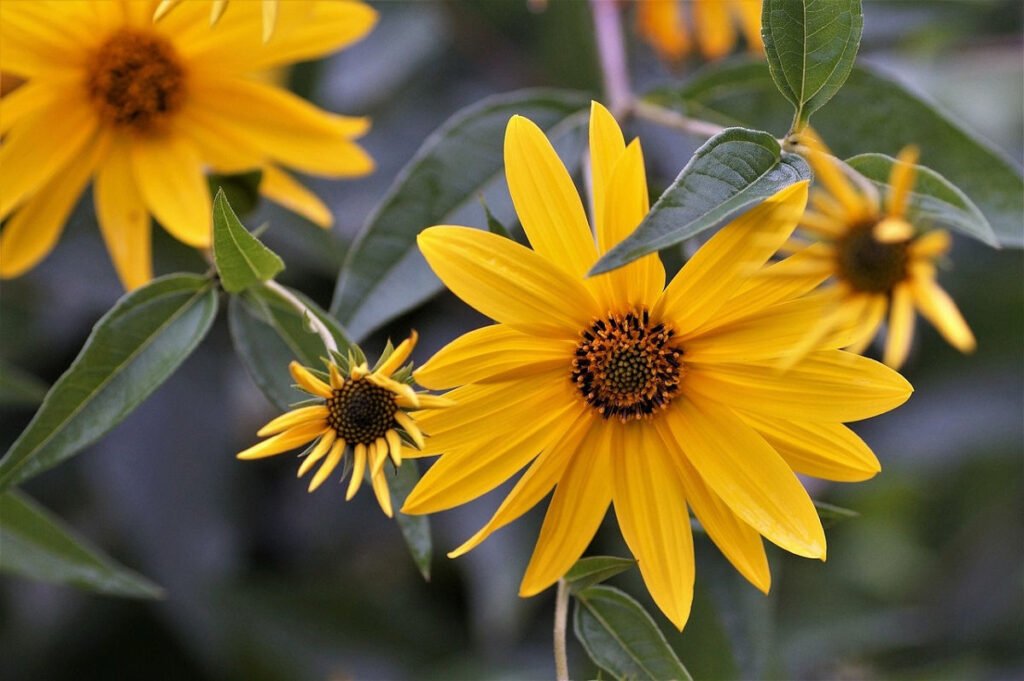
Leaning on your community
I live in an incredible community. People are kind and giving and always willing to share. They are an incredible source of free plants, plant pots and other useful things for me.
A member in our community was thinning out some Black Eyed Susans and I was lucky enough to get a handful to transplant into my garden.
Another member gave me a huge bundle of chive plants. While yet another gave me some strawberry plants.
I was also gifted some Jerusalem Artichokes, which grew well and are now overwintering. I look forward to harvesting some of these in the spring.
These are being kept in a pot for now, as they are known to be difficult to contain. At some point I will probably build a dedicated garden box for them.
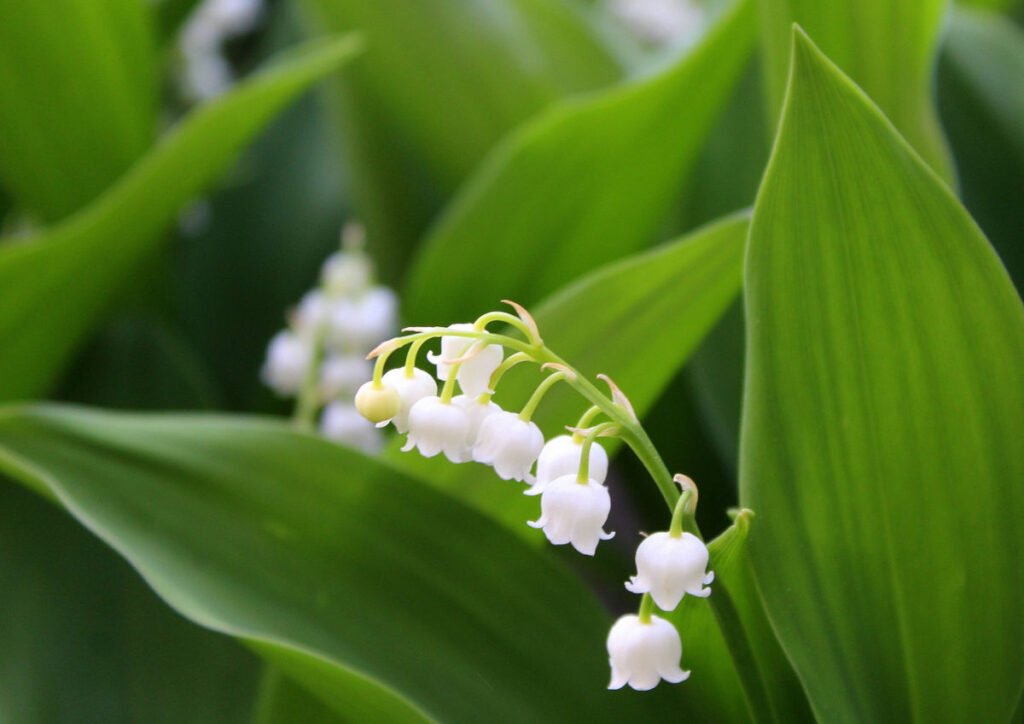
Invasive Species
But something to note is to be very careful when getting plants from other people. You want to make sure there are no invasive species that are transplanted at the same time.
I stick to people that live nearby. This way I know I am not spreading invasive species across larger distances, should something hitchhike with the plants.
Unfortunately, I already have my fair share of invasive species in the garden. Some lilies of the valley, several climbing roses and a large patch of goutweed to name a few. Follow along as I start tackling these pesky plants and replacing them with native species!

Raised Garden Beds
Our biggest project and success of the year was building 4 garden boxes. We had already bought the lumber in 2023, but ran out of time.
We decided to do a little experiment, and we scorched the inside of two of the boxes. Burnt wood is more rot resistant and supposed to last longer.
How this holds up for a garden box we aren’t sure. But we’ll know in a few years!
I guess you will have to subscribe to my blog and follow along to see what we discover 😊
For the process of how we did this, check out this post.

